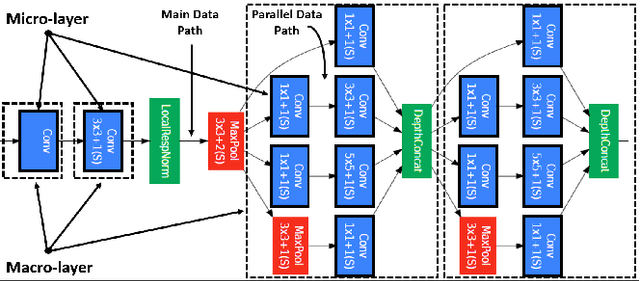Mahya Saffarpour
Deep Harmonic Finesse: Signal Separation in Wearable Systems with Limited Data
Jul 01, 2024



Abstract:We present a method, referred to as Deep Harmonic Finesse (DHF), for separation of non-stationary quasi-periodic signals when limited data is available. The problem frequently arises in wearable systems in which, a combination of quasi-periodic physiological phenomena give rise to the sensed signal, and excessive data collection is prohibitive. Our approach utilizes prior knowledge of time-frequency patterns in the signals to mask and in-paint spectrograms. This is achieved through an application-inspired deep harmonic neural network coupled with an integrated pattern alignment component. The network's structure embeds the implicit harmonic priors within the time-frequency domain, while the pattern-alignment method transforms the sensed signal, ensuring a strong alignment with the network. The effectiveness of the algorithm is demonstrated in the context of non-invasive fetal monitoring using both synthesized and in vivo data. When applied to the synthesized data, our method exhibits significant improvements in signal-to-distortion ratio (26% on average) and mean squared error (80% on average), compared to the best competing method. When applied to in vivo data captured in pregnant animal studies, our method improves the correlation error between estimated fetal blood oxygen saturation and the ground truth by 80.5% compared to the state of the art.
* Presented at the 61st ACM/IEEE Design Automation Conference (DAC '24)
Resource-Scalable CNN Synthesis for IoT Applications
Dec 16, 2018



Abstract:State-of-the-art image recognition systems use sophisticated Convolutional Neural Networks (CNNs) that are designed and trained to identify numerous object classes. Such networks are fairly resource intensive to compute, prohibiting their deployment on resource-constrained embedded platforms. On one hand, the ability to classify an exhaustive list of categories is excessive for the demands of most IoT applications. On the other hand, designing a new custom-designed CNN for each new IoT application is impractical, due to the inherent difficulty in developing competitive models and time-to-market pressure. To address this problem, we investigate the question of: "Can one utilize an existing optimized CNN model to automatically build a competitive CNN for an IoT application whose objects of interest are a fraction of categories that the original CNN was designed to classify, such that the resource requirement is proportionally scaled down?" We use the term resource scalability to refer to this concept, and develop a methodology for automated synthesis of resource scalable CNNs from an existing optimized baseline CNN. The synthesized CNN has sufficient learning capacity for handling the given IoT application requirements, and yields competitive accuracy. The proposed approach is fast, and unlike the presently common practice of CNN design, does not require iterative rounds of training trial and error.
 Add to Chrome
Add to Chrome Add to Firefox
Add to Firefox Add to Edge
Add to Edge